
And they went across the river. For normal people, this is just a herd to the horizon, but in general it is one of the most impressive sights on the planet. Douglas-Hamilton wrote about the great migration as follows: “Most of the scientists present shared this feeling, and they watched the migration of wildebeests with the same respectful admiration with which they contemplate the La Gioconda.
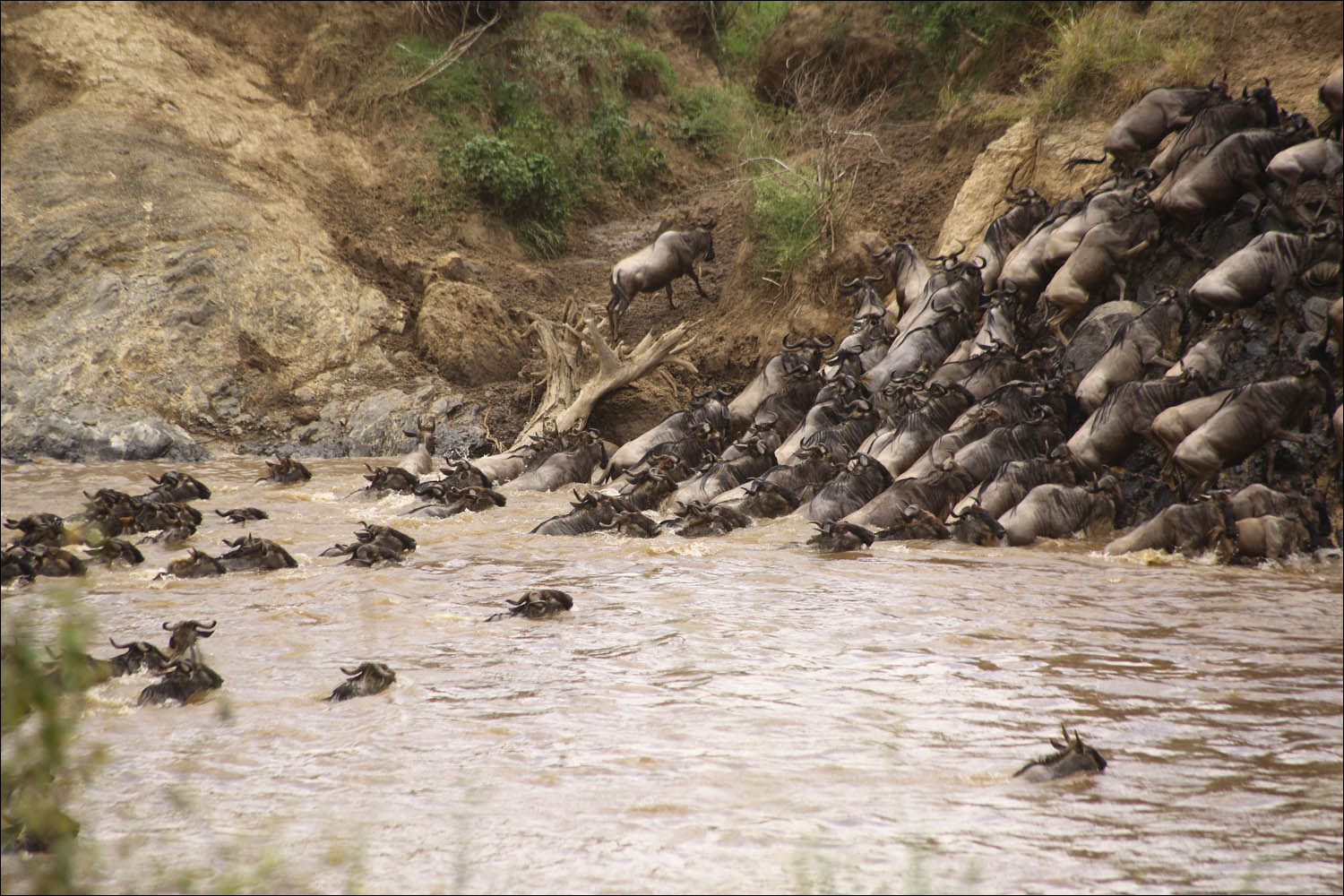
Let's dig a little deeper into the ecosystem and the wildebeest mindset to understand what happened and why. Today we will think like wildebeests. A very rational wildebeest with an IT education.
- Why did the third antelope from the right cross the river?
Because in her winding the most significant was the potential “follow the rest of the herd”, and the rest of the herd began to cross the river.
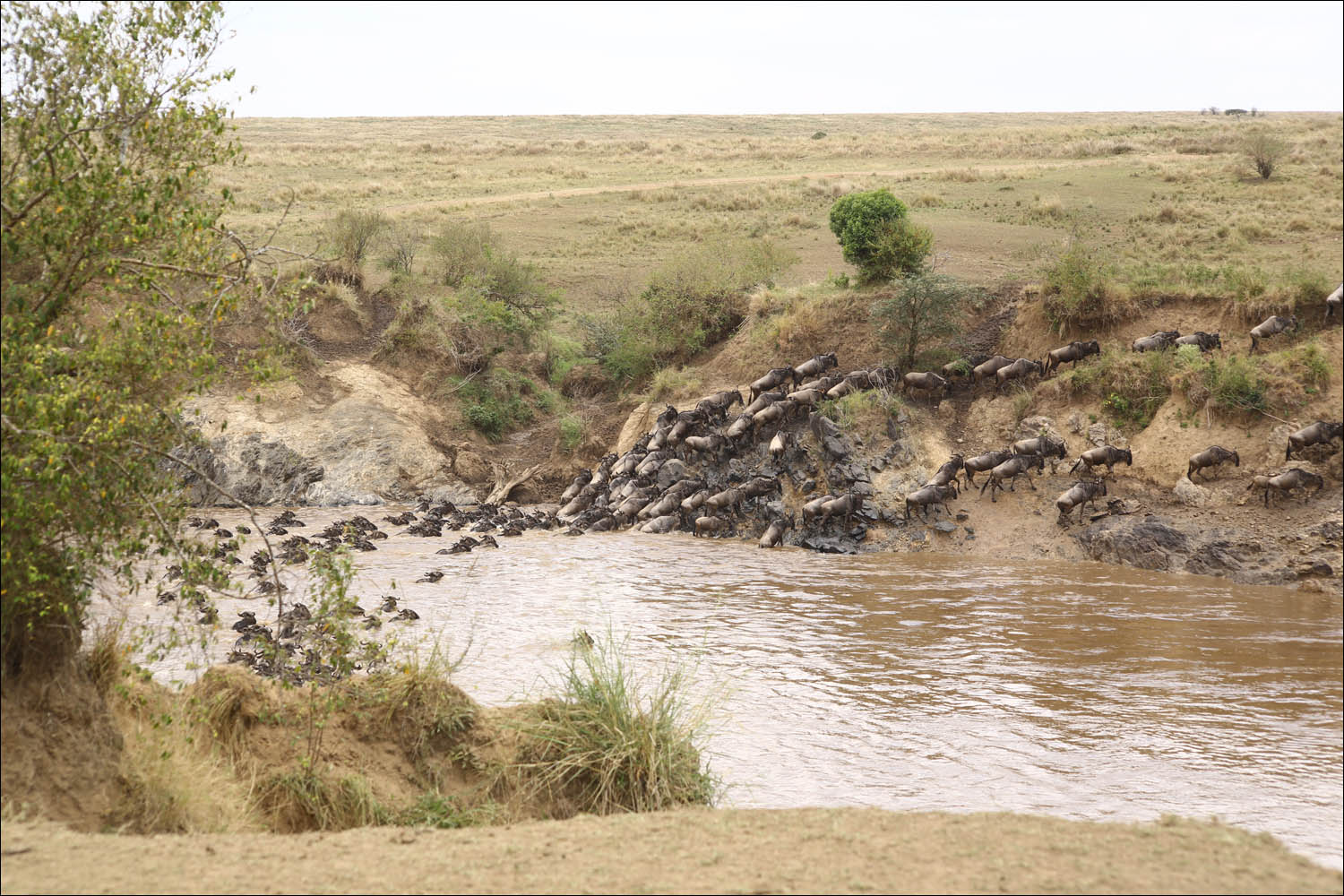
- Why did the herd start crossing the river?
Because antelopes have the standard feature of migrating to places where the grass is greener and tastier, and thus save themselves from drought. On the border between Kenya and Tanzania, there is just such a place where the grass matures at different rates due to the peculiarities of the climate, and if you walk back and forth, there will always be enough feed.
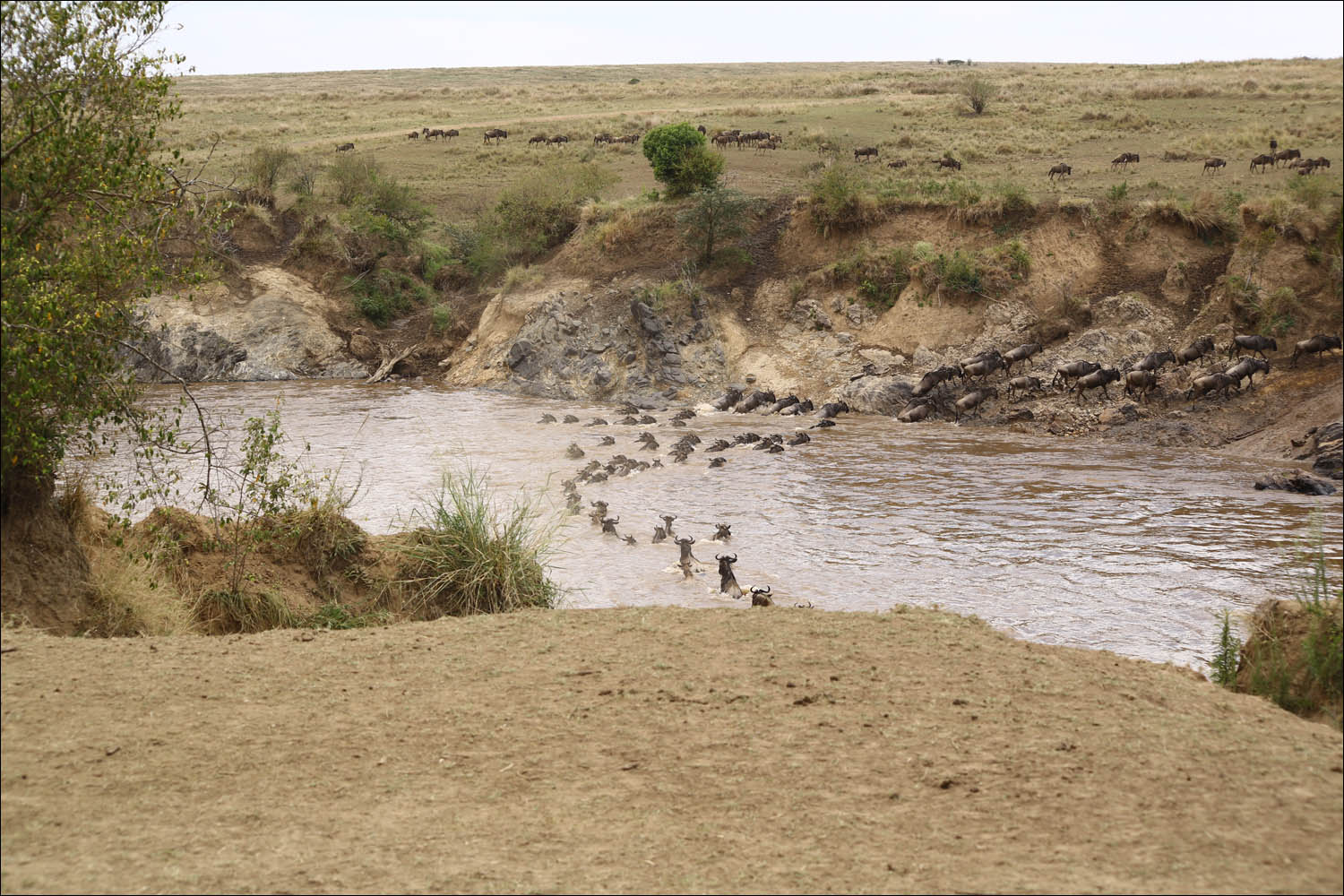
- Why did they go a little early?
Because over the years of applying such mechanics, they have learned to walk along a weak gradient from a future drought, or they have an early trigger “it's time to get out of here” - it depends on the specific species and region. I have a suspicion that we are talking about the most delicious forage grass in a particular region, and when it ends, the herds start looking for a place where there is more of it.
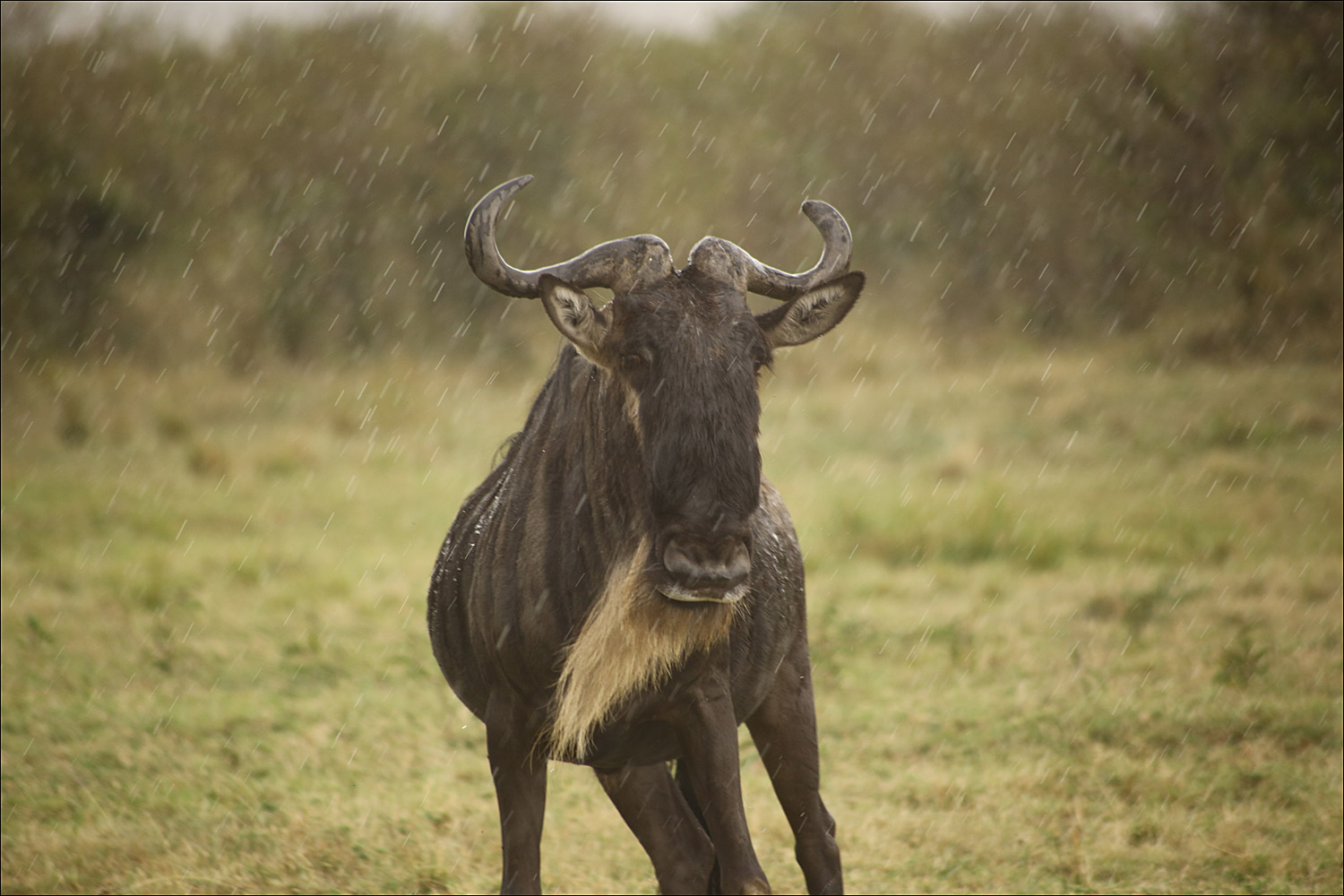
A single wildebeest, my favorite portrait from the trip. Like almost all herbivores, it looks to the sides, which is why such a slightly awkward facial expression.
- What's on the other side of the river?
It is not just a river, but the border between Tanzania and Kenya - and between Masai Mara and Serengeti. The Serengeti ("plain" in Masai) is a large area in Tanzania where huge (the largest on the planet) herds of artiodactyls can comfortably settle. It's about tens of thousands. Masai Mara ("the hilly land of the Masai") is an order of magnitude smaller area, something like a mountain bag, where you can migrate for part of the season. Therefore, wildebeests come in the second half of summer and leave at the beginning of autumn.
There is a hypothesis that migration is still related to the height of the grass, this is what Grzimek writes in his book Among the Animals of Africa:
« , , , , , … . , , , , , . .»

- Why did the antelopes cross the river in a large group, and not just evenly distributed?
The river is designed in such a way that there are not many places to cross. Almost the entire space of the reserves is a huge volcano crater, filled with lava and surrounded by walls. The river has cut a bed in the lava, and therefore has very steep banks. Places to go literally one for 5 kilometers. Crocodiles and other predators await in these places. That is, the potential “need to go” should be higher than the potential “I'm afraid of the crocodile”.
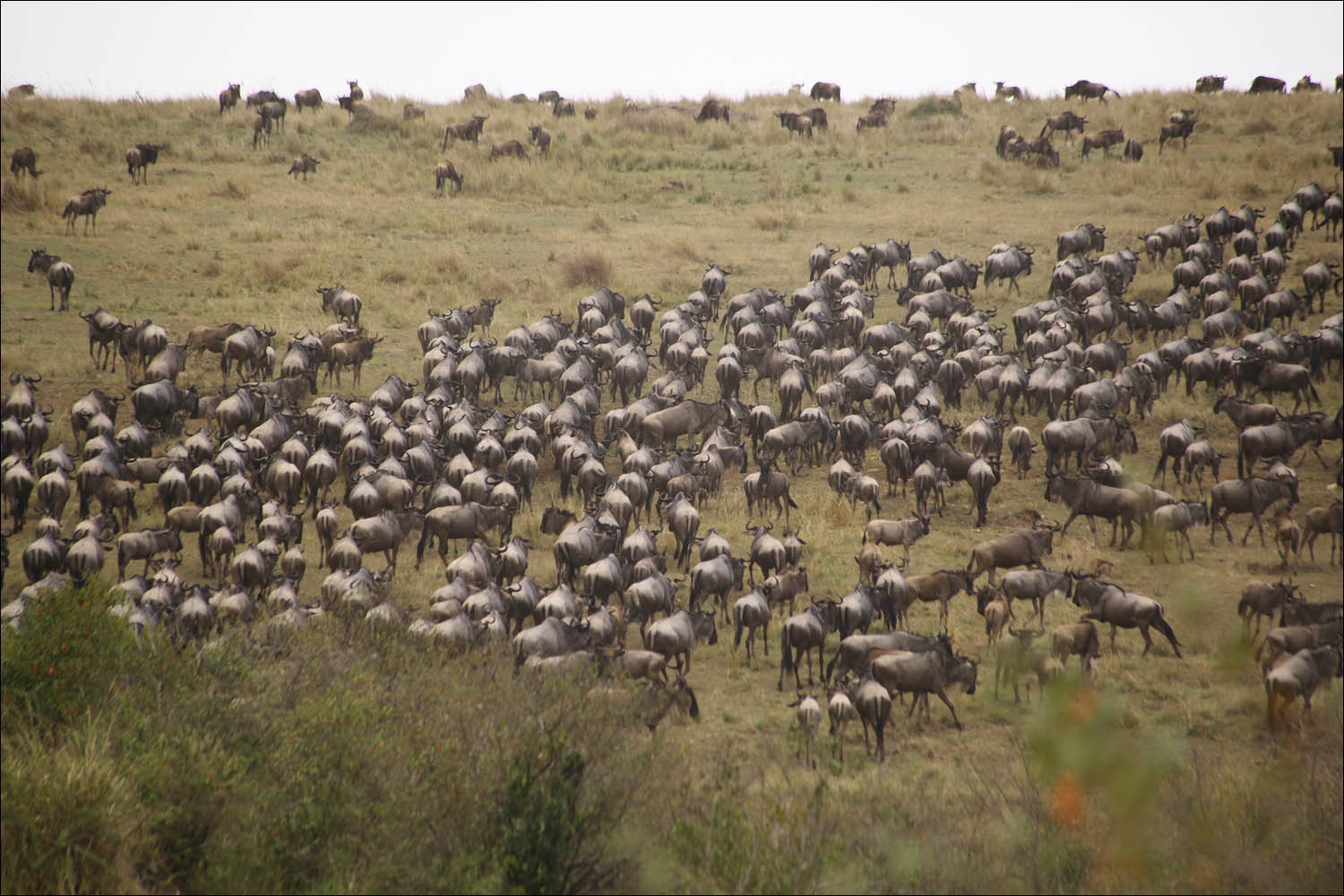
Another reason is that antelopes follow their own scent trails, that is, each successful path corresponds to a large number of chemical traces, this is such a social proof. Joe from Nairobi National Park claimed that they find their groups this way, even if they beat them off for several hours.
— « »?
- , — , . , . , , . .
- . , , (, , ). — « , ».
- — .
- , .
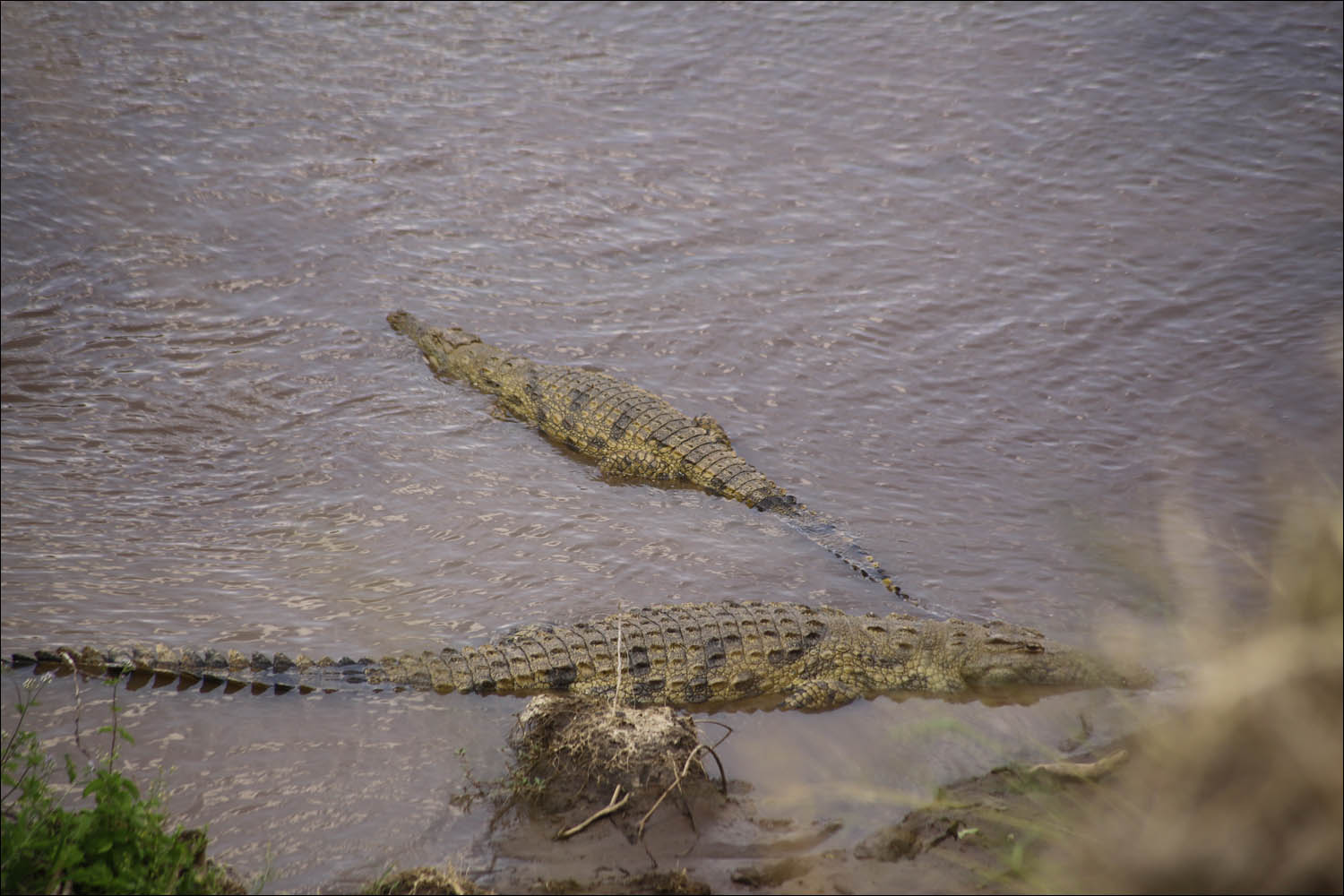
— « »?
- — . .
- — , , .
- — , , . — .
- (, ).
That is, we have a system of weighting factors that influence the choice.
- At what point is the decision to transfer made?
For the particular case of antelope number N + 1, the potential system has already been shifted towards “I am following my own, my own people are pushing me behind, everything is fine”. That is, she just repeats everything the others do. The only thing that can change the situation is the appearance of a crocodile close up, the potential "I'm afraid of a particular crocodile" will immediately give much more points than "hey, you can't lag behind your own."
But migration starts somewhere. And still waves of migration are constantly cut off: antelopes accumulate on the shore, wait, weigh the potentials, spend time with interest, but do not cross.
In our case, the wildebeest accumulated on the banks of the Mary for about 6 days. Then in 2 hours and 20 minutes from 3 to 8 thousand individuals, according to local estimates, passed.
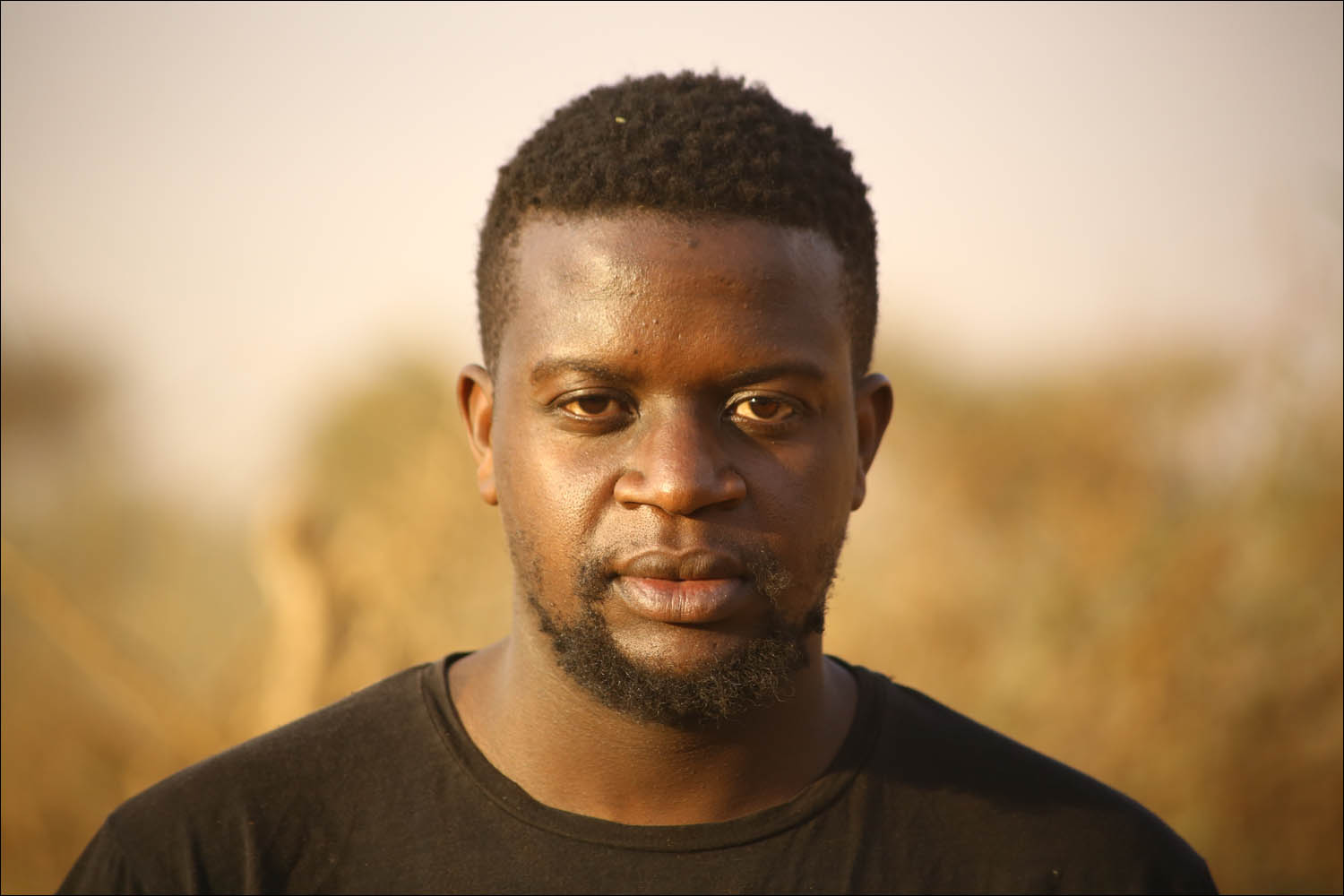
The cars in the national park are equipped with radio stations, and there was a full coverage of the events in Swahili, which Richard translated for me.
Consider a null antelope approaching a river. She suddenly falls ashore and says:
- Wildebeest !
She is answered:
- Wildebeest .
- Wildebeest !
- Wildebeest, wildebeest !
- Wildebeest !
Antelope approaching from behind say:
- Wildebeest, wildebeest, wildebeest !
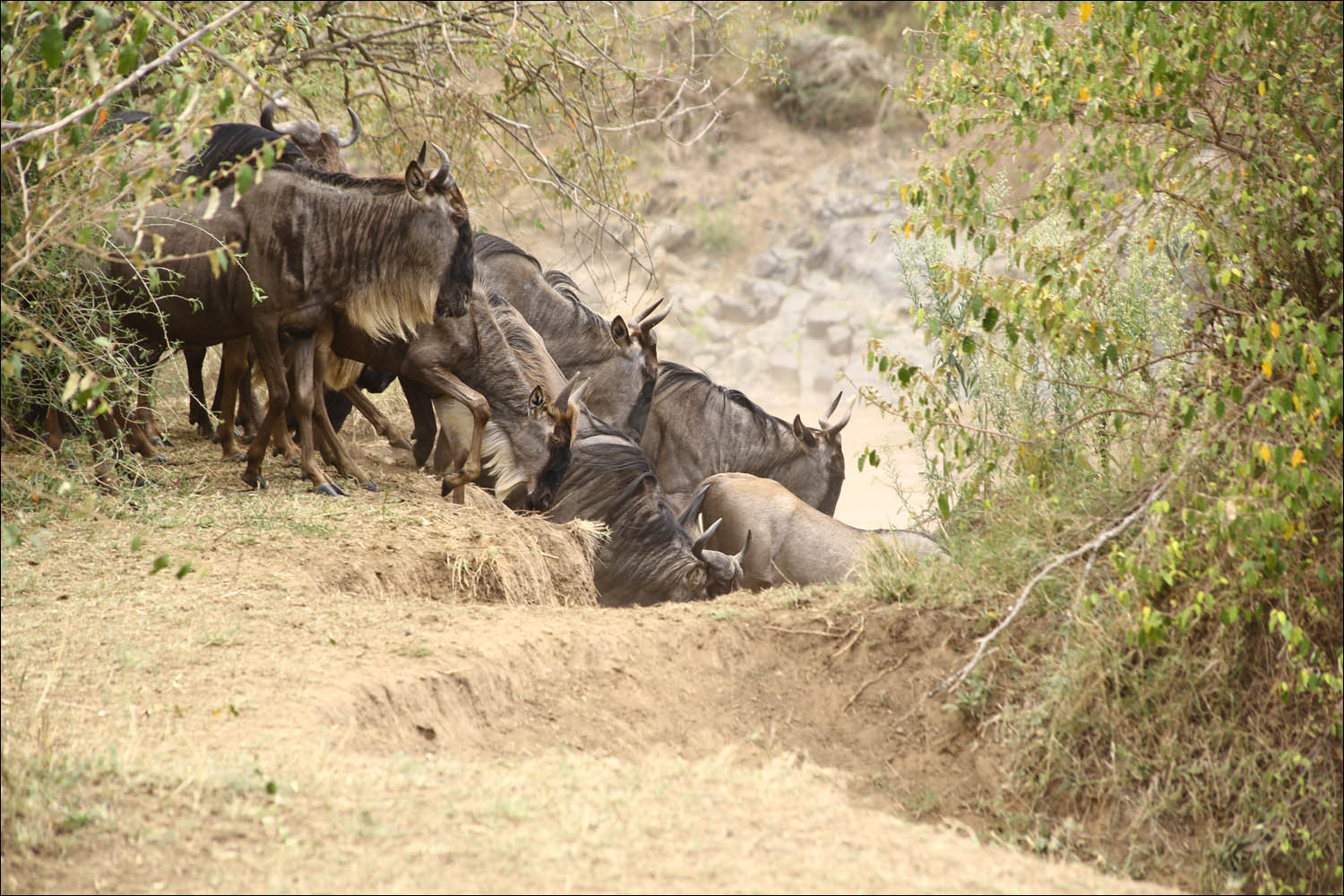
In optimal play from a biological standpoint, the best behavior is not to do anything unexpected. This is the reason why a leopard usually does not touch a person: he can. But it won't. His firmware directly tells him that creative thinking leads to death. Animals start experimenting only if typical actions don't help. That is, due to hunger. Our antelopes are full, and therefore it makes no sense for them to take risks. The natural resolution of the potential is to devour all the resources on this bank and go to that one for them. Or have some other evolutionary reason.
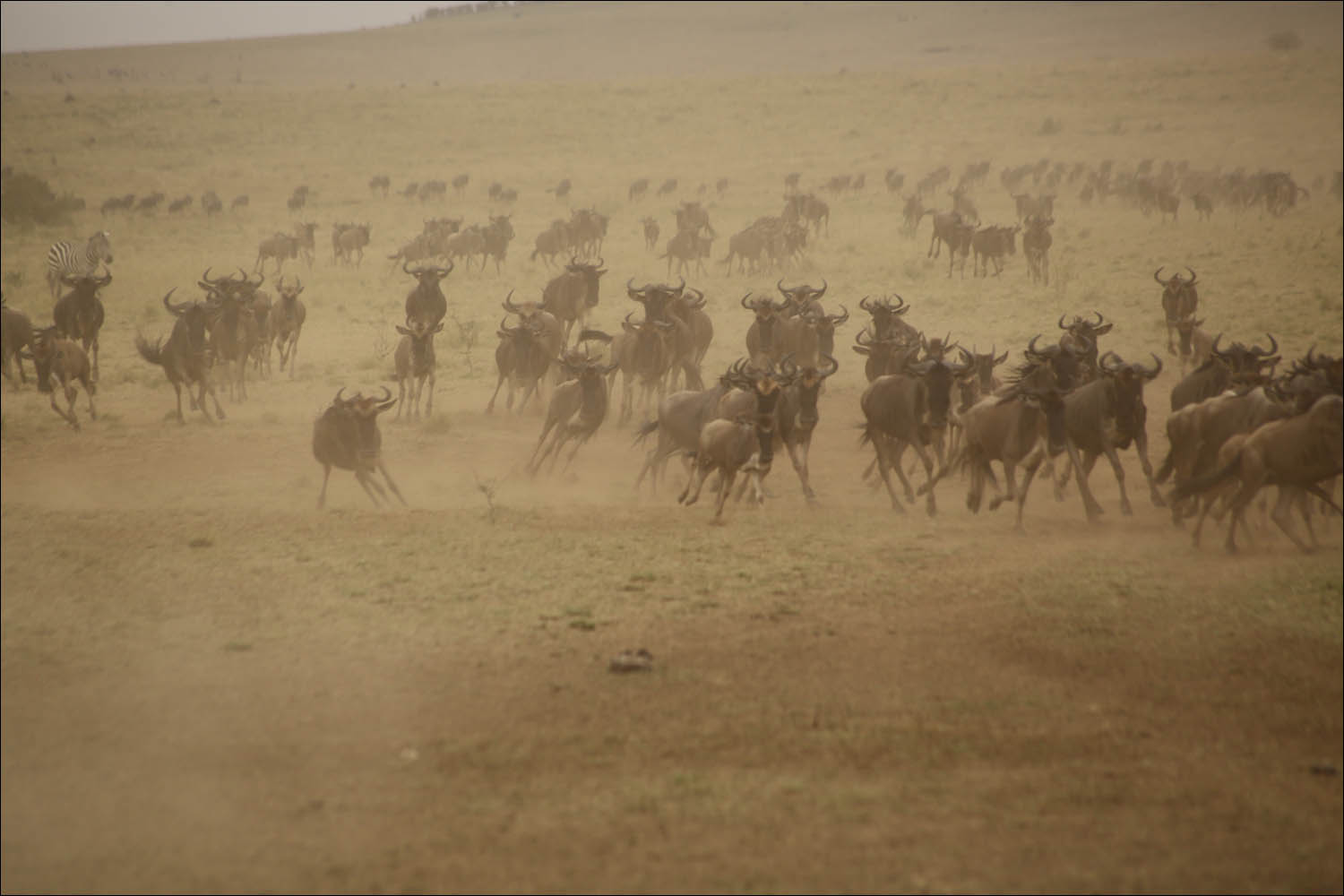
In addition to strategic triggers, there are tactical ones. As we know, for an individual N + 1 these are the previous N antelopes in front. But for zero it may be something else. During these two hours I observed three basic starts of the wave:
- , . , . : . , 50 , , . , - .
- , , . , . « » , . , . - , , , . , , , , , . — .
- - , . . , . «», .
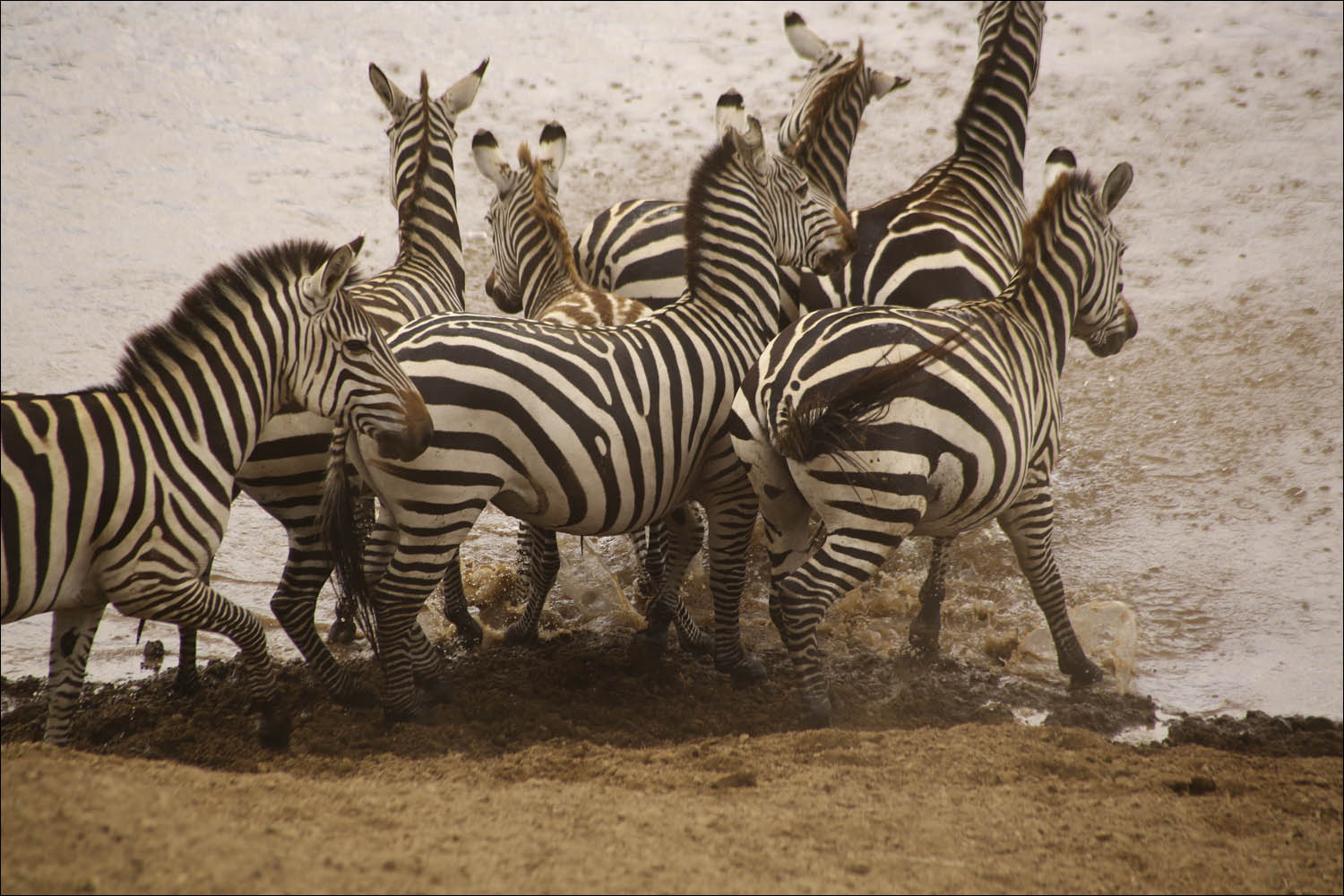
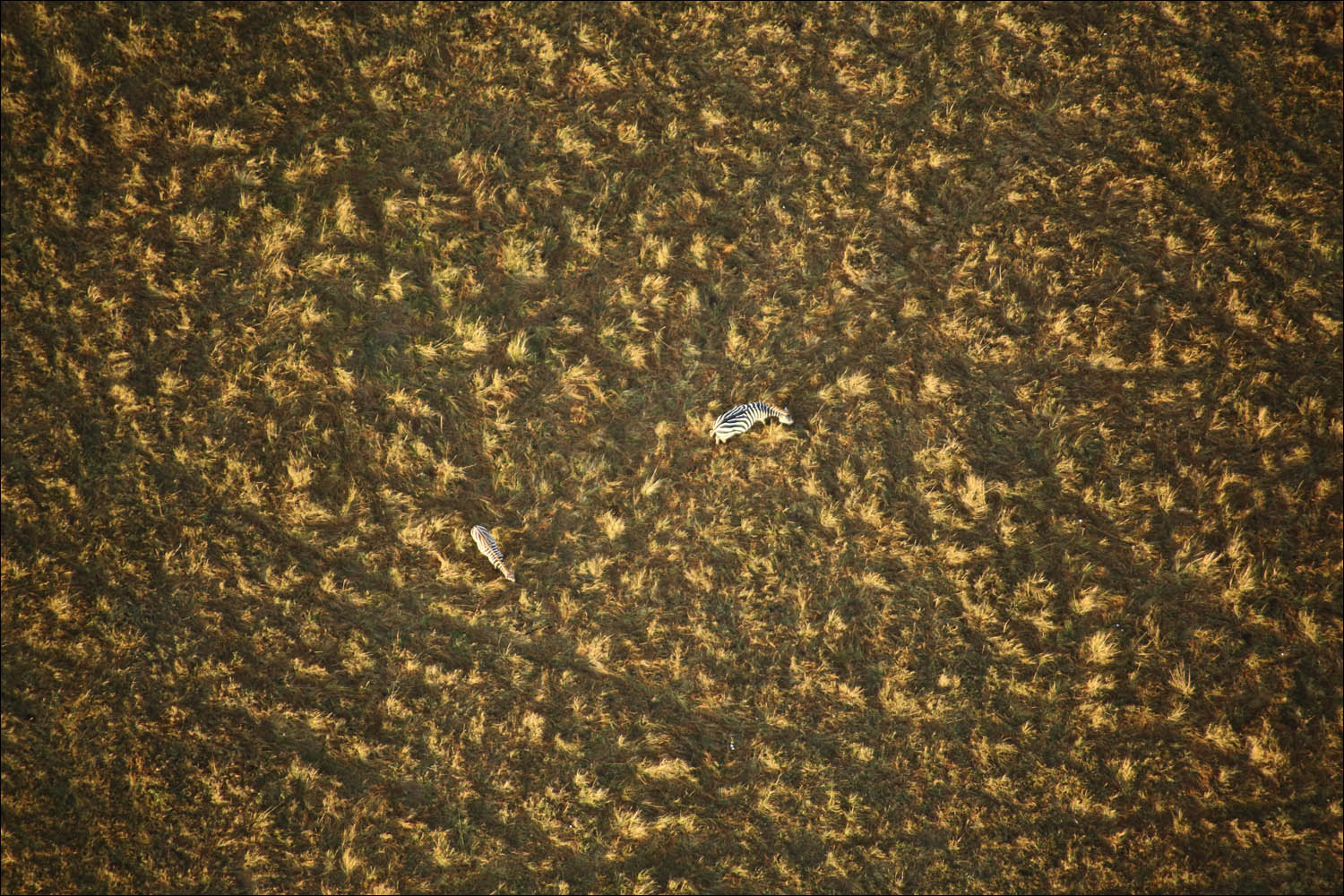
— ?
Because they have different firmware and different sets of sensors, plus not very high competition for food. They eat grass of different lengths (zebra is short enough, wildebeest take long). Wildebeests are good at sniffing, and zebras are good at seeing. I watched a picture of two cheetahs (possibly more) sneaking up on Thomson's group of antelopes. There were about 6 striped horses 150 meters further. So, they turned to the cheetah, turned tommy on them, realized that they needed to look for something in the opposite direction, began to study the bushes, and still burned the cat. Quietly walked away. The cheetahs got up and walked through the center of their group. Tommy calmed down because when you see the cat, everything is fine. Their speed is enough to get away from the visible threat, but may not be enough to get away from the one that unexpectedly fell on the shoulders or grabbed onto the hind leg.
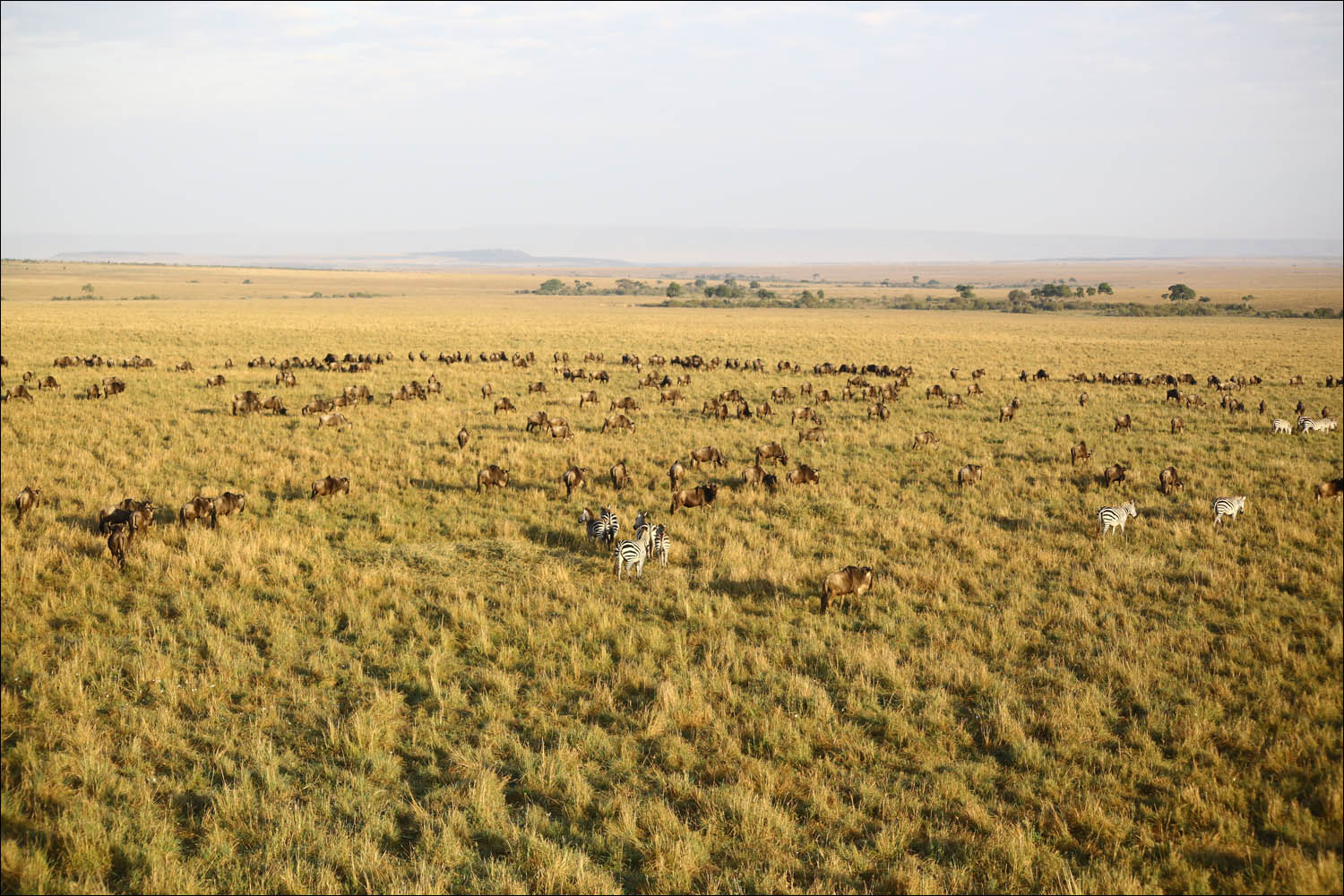

- Stop, if Tommy is faster than a predator, how do they catch them?
The cheetah chooses either a victim with very poor qualities for survival (frankly stupid, inattentive, not careful enough) or weak, old and sick individuals. This is important because, as we know from the Black Lands reserve, one sick antelope can bring several hundred others to the grave. In the absence of predators, antelopes can grow their population faster in the horizon of a year or two, but the very first epidemic will endure a lot of animals. Predators in sufficient numbers simply won't give patient zero enough mischief. When the sick run out, they take healthy ones too. But catching up with a warned antelope is many times more difficult than a weakened one or caught by surprise. The cheetah is fast, but not very hardy, it is important for him that the initial distance between him and the victim is minimal.
Therefore, if you are sick, go somewhere and get well (often typical for the K-strategy), or a savannah orderly is waiting for you (often typical for medium and extreme r-strategies).
- Why the wildebeest can turn around 80-90% of the swam river?
About 6 times during this episode of migration, I saw a picture of a wildebeest bravely crossing half of the river, then looking around and realizing that he was swimming alone. Because it was not necessary to swim after the zebras, or because the herd turned aside after him and "intervened" in another "line to swim". In this case, the weighing of the potentials is very interesting. The wildebeest continues to swim across the river because a series of potentials are pushing him to do so. Then the "social distance" increases, and you can clearly see how this makes our hero worry. In the end, the potential “to be with your own” outweighs, and the wildebeest floats back. And then, in the crowd, he calmly floats across the river again.
- Is this stupid behavior?
Yes and no. Obviously, tactically it is sub-optimal. But strategically, in order to prescribe exceptions for such situations, it will be necessary to expand the functionality of the brain (and its power, consumption, etc., increase the training time of a new animal and generally pay all the resulting overhead costs), or reduce the coefficient of action of the herd potential (and then in other situations, the antelopes will keep away from each other, which will reduce survival more than it will increase for this situation), or simply decide that a pair of wildebeests is not worth touching what already works great. Serious evolutionary shifts are often leaps and bounds, so no pull requests to the wildebeest yet, please.
- Why are wildebeests afraid of crocodiles after the first transition; will they overflow quickly?
I was also surprised by this factor until I learned that crocodiles are not overcrowded. As a seasoned suitcase breeder at the suitcase farm explained, they can eat raw and hidden (to make it rotten and softer). Therefore, they take the first wildebeest and eat fresh. And then they come and take the next wildebeest to hide under the stones at the bottom, so that they become softer later. That is, the crocodile does not effectively preserve food, but stores food for the future. He has it somewhere in the hardcode, because in general his whole brain is hardcode. But this intro64k is very impressive.
- Why are there alarmed hippos around?
Because hippos are unhappy with the noise. They don't attack the wildebeest on purpose, but they want to control the situation. Therefore, they are vigilant.
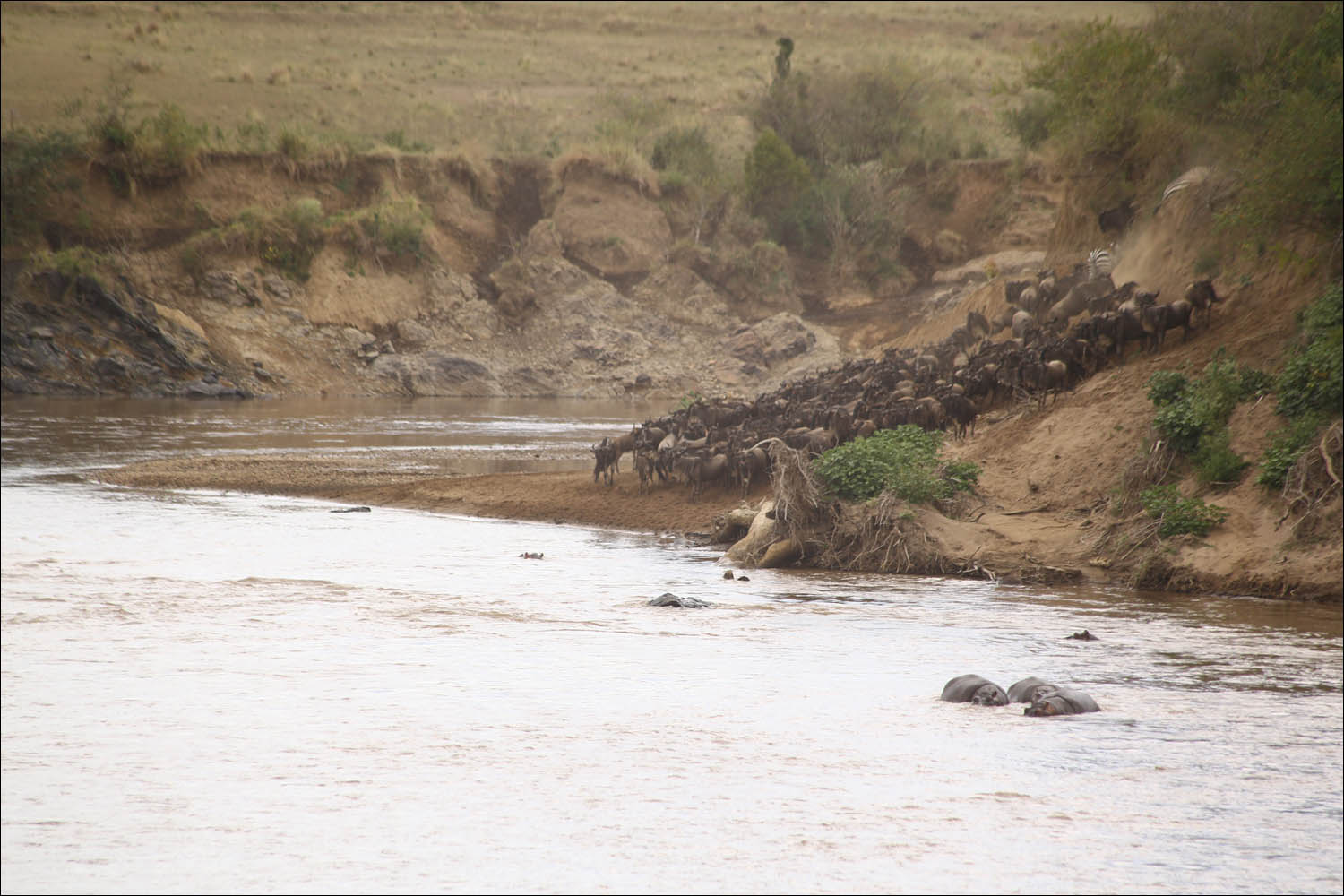
- Why doesn't the crocodile eat the hippo?
Because the hippopotamus will insert such lulls for him that it will not seem a little. As practice shows, a hippopotamus can even fill a unicorn's face . In general, don't mess with hippos whenever possible. But crocodiles eat their carcasses if the hippos lean back for some of their hippopotamus reasons.
- Why don't the lions attack the migrating group?
They also attack. But, unlike crocodiles, they really fill up quickly.
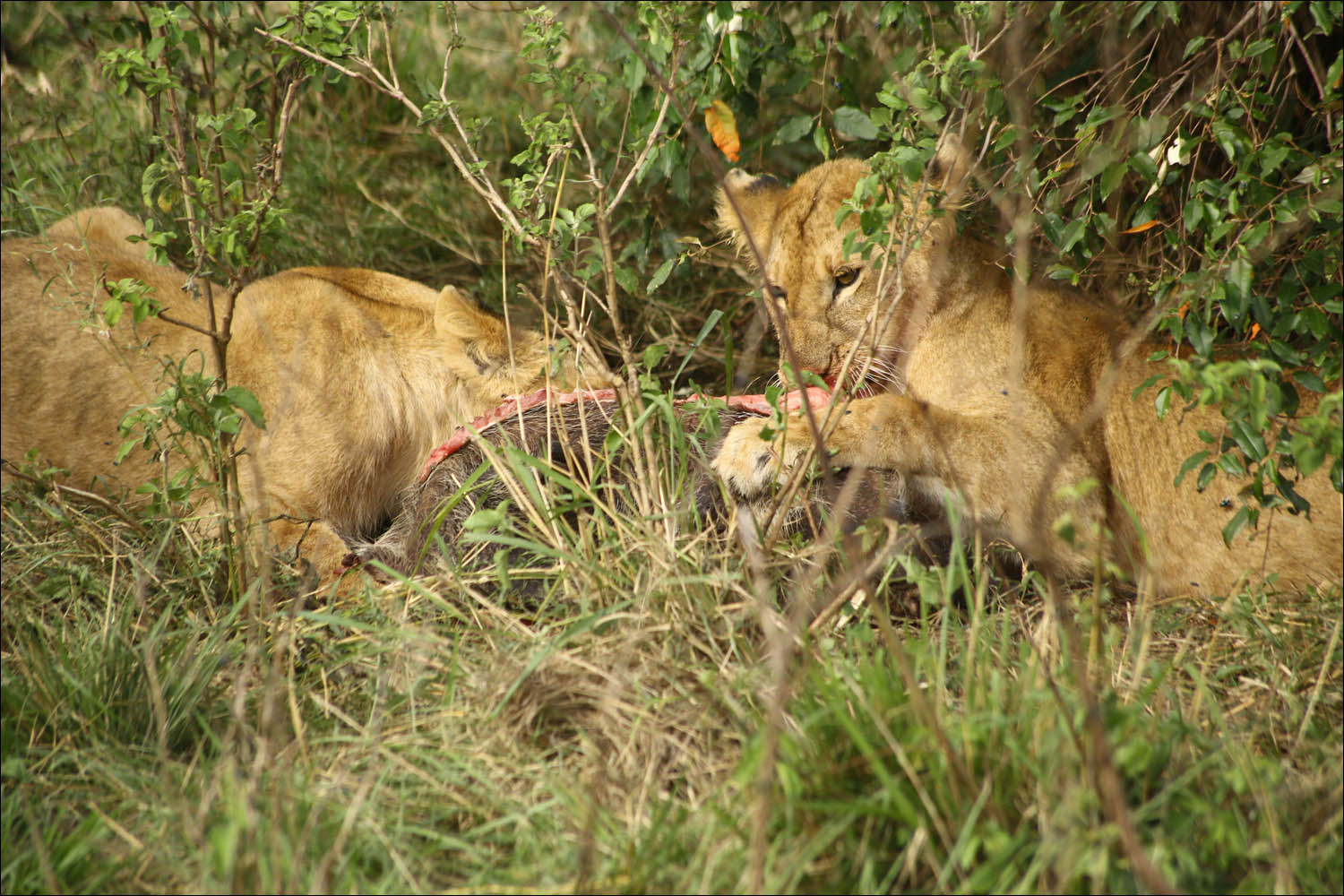
Simba and Pumbaa
- What about the main predator - humans?
Here we break into another aspect of the ecosystem. The place is a national park (more precisely, the Kenyan Masai Mara and the Tanzanian Serengeti). That is, the animals are protected. The activities of the Maasai and the movement of vehicles on the roads are allowed. Film crews for horse money can take an off-road license and move as they want. Drone photography is even more expensive and is not used in practice. Aerial footage is a silent balloon.
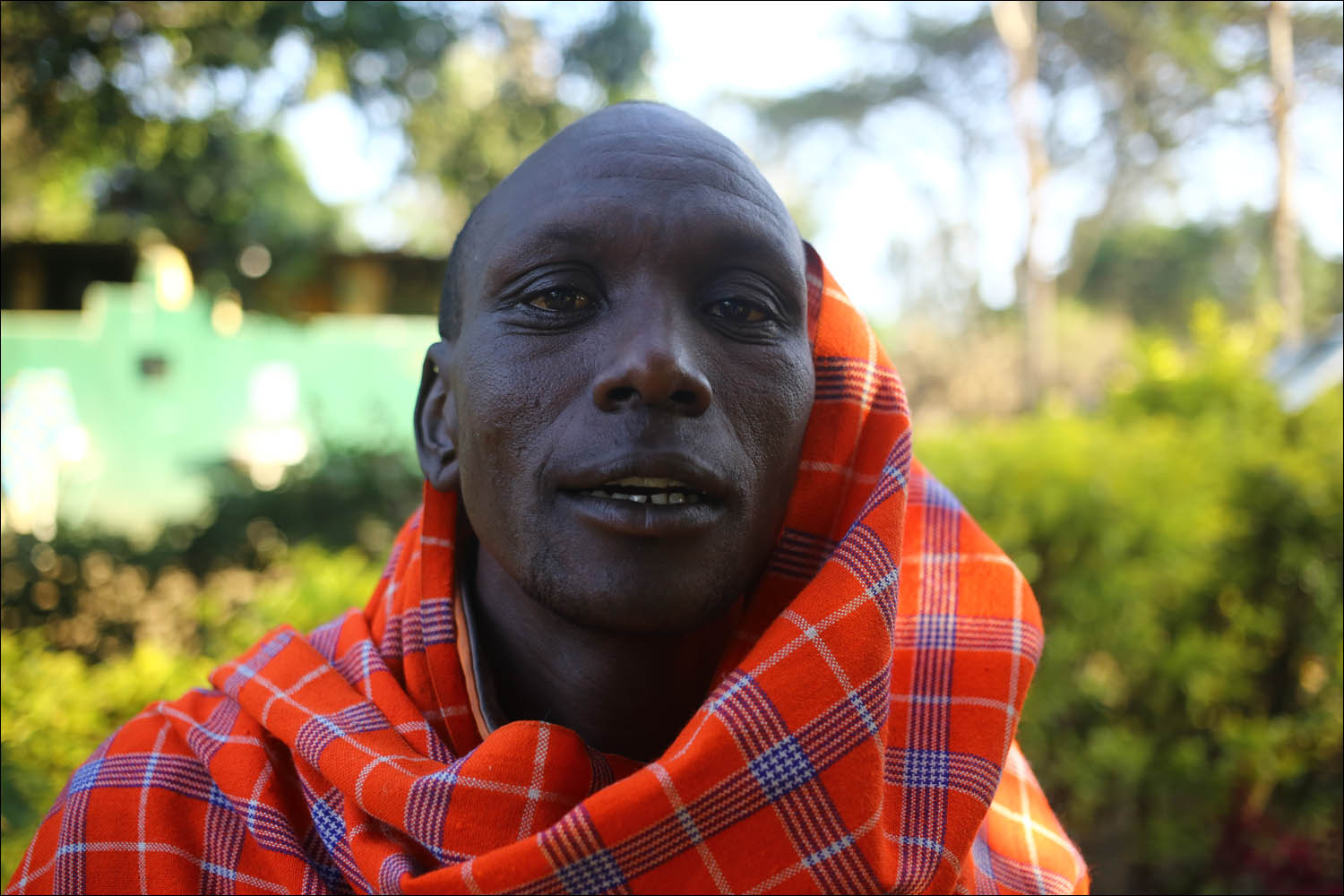
- Stop-stop, why can the Masai?
This is generally a completely fierce story. Let's start from the other side: African countries are interested in preserving animals for a number of rather abstract reasons with long-term consequences like “the planet needs it”, “preserve the species” and so on. And for a number of specific - the conservation of animals means money from tourists. There is an opportunity to attract a large flow (in Kenya it is really large) for animals and arrange a Game Drive. To preserve the animals, you need to ensure that there are no farmers on the territory who, no, no, will take someone away, and, of course, poachers. Grzimek's "The Serengeti Must Not Die" tells the story of how they tried to catch poachers. It all ends sadly. The Masai served as a way out: they are actually aboriginal cattle breeders, but at the same time they perfectly know how not to let anyone extra into their lands.That is, they cause harm by their economic activities, but this harm is significantly less than from poachers. Another factor of protection against poachers is the absence of a clear border between the territories of Kenya and Tanzania in this place. There is no no man's land or DMZ here, just a river. The Masai can go back and forth as they want, the rest can through passport control. But the important thing is that you can go deeper into someone else's territory and return. This "interpenetration" of borders is done so that poachers can be pursued, otherwise the border would be an ideal refuge for them. Another important factor in protecting the cattle ecosystem in Africa is the desert advance. If you knock out animals, then after a few steps of causality, the cycles of plant support are disrupted, and the desert begins to creep. And nobody needs it.but this harm is significantly less than from poachers. Another factor of protection against poachers is the absence of a clear border between the territories of Kenya and Tanzania in this place. There is no no man's land or DMZ here, just a river. The Masai can walk back and forth as they want, the rest can through passport control. But the important thing is that you can go deeper into someone else's territory and return. This "interpenetration" of borders is done so that poachers can be pursued, otherwise the border would be an ideal refuge for them. Another important factor in protecting the cattle ecosystem in Africa is the desert advance. If you knock out animals, then after a few steps of causality, the cycles of plant support are disrupted, and the desert begins to creep. And nobody needs it.but this harm is significantly less than from poachers. Another factor of protection against poachers is the absence of a clear border between the territories of Kenya and Tanzania in this place. There is no no man's land or DMZ here, just a river. The Masai can walk back and forth as they want, the rest can through passport control. But the important thing is that you can go deeper into someone else's territory and return. This "interpenetration" of borders is done so that poachers can be pursued, otherwise the border would be an ideal refuge for them. Another important factor to protect the cattle ecosystem in Africa is the desert advance. If you knock out animals, then after a few steps of cause-and-effect relationships, the cycles of plant support are disrupted, and the desert begins to creep. And nobody needs it.Another factor of protection against poachers is the absence of a clear border between the territories of Kenya and Tanzania in this place. There is no no man's land or DMZ here, just a river. The Masai can go back and forth as they want, the rest can through passport control. But the important thing is that you can go deeper into someone else's territory and return. This "interpenetration" of borders is done so that poachers can be pursued, otherwise the border would be an ideal refuge for them. Another important factor in protecting the cattle ecosystem in Africa is the desert advance. If you knock out animals, then after a few steps of causality, the cycles of plant support are disrupted, and the desert begins to creep. And nobody needs it.Another factor of protection against poachers is the absence of a clear border between the territories of Kenya and Tanzania in this place. There is no no man's land or DMZ here, just a river. The Masai can go back and forth as they want, the rest can through passport control. But the important thing is that you can delve into someone else's territory and return. This "interpenetration" of borders is done so that poachers can be pursued, otherwise the border would be an ideal refuge for them. Another important factor to protect the cattle ecosystem in Africa is the desert advance. If you knock out animals, then after a few steps of causality, the cycles of plant support are disrupted, and the desert begins to creep. And nobody needs it.The Masai can walk back and forth as they want, the rest can through passport control. But the important thing is that you can go deeper into someone else's territory and return. This "interpenetration" of borders is done so that poachers can be pursued, otherwise the border would be an ideal refuge for them. Another important factor to protect the cattle ecosystem in Africa is the desert advance. If you knock out animals, then after a few steps of cause-and-effect relationships, the cycles of plant support are disrupted, and the desert begins to creep. And nobody needs it.The Masai can walk back and forth as they want, the rest can through passport control. But the important thing is that you can delve into someone else's territory and return. This "interpenetration" of borders is done so that poachers can be pursued, otherwise the border would be an ideal refuge for them. Another important factor in protecting the cattle ecosystem in Africa is the desert advance. If you knock out animals, then after a few steps of cause-and-effect relationships, the cycles of plant support are disrupted, and the desert begins to creep. And nobody needs it.Another important factor to protect the cattle ecosystem in Africa is the desert advance. If you knock out animals, then after a few steps of cause-and-effect relationships, the cycles of plant support are disrupted, and the desert begins to creep. And nobody needs it.Another important factor to protect the cattle ecosystem in Africa is the desert advance. If you knock out animals, then after a few steps of cause-and-effect relationships, the cycles of plant support are disrupted, and the desert begins to creep. And nobody needs it.

— , ?
We have a fabulous place on earth where you can see a huge number of animals - approximately, as before the arrival of man. This is possible largely due to tourism (otherwise the main economic reason to protect these animals would be lost). We chose one of the links of the ecosystem - the wildebeest - at the very moment when all the circumstances around made them act the way they did - to line up these huge queues on the huge grassy plains and cross the river. These are not random actions, not traditions, but the interaction of the external environment, genetic and acquired behavior programs. Each element of the system has a meaning and affects whether the wildebeest will cross the river. Well, yes, now you see that that simplified AI model for cows, which has become a legend about our programmers, is found in nature in a slightly more complex form.
Well, yes, I made a story about all this for tourists, and you can see it here:
If I once get to Mozambique, I will be able to tell and show that many years of research into such causal relationships and the tremendous work of scientists in the conditions of a not richest African country still made it possible to restore an almost completely unbalanced ecosystem with large animals, that is, they are very large and have convincingly proven that we can reverse a significant portion of the damage we do to living systems. If we really, really want to.